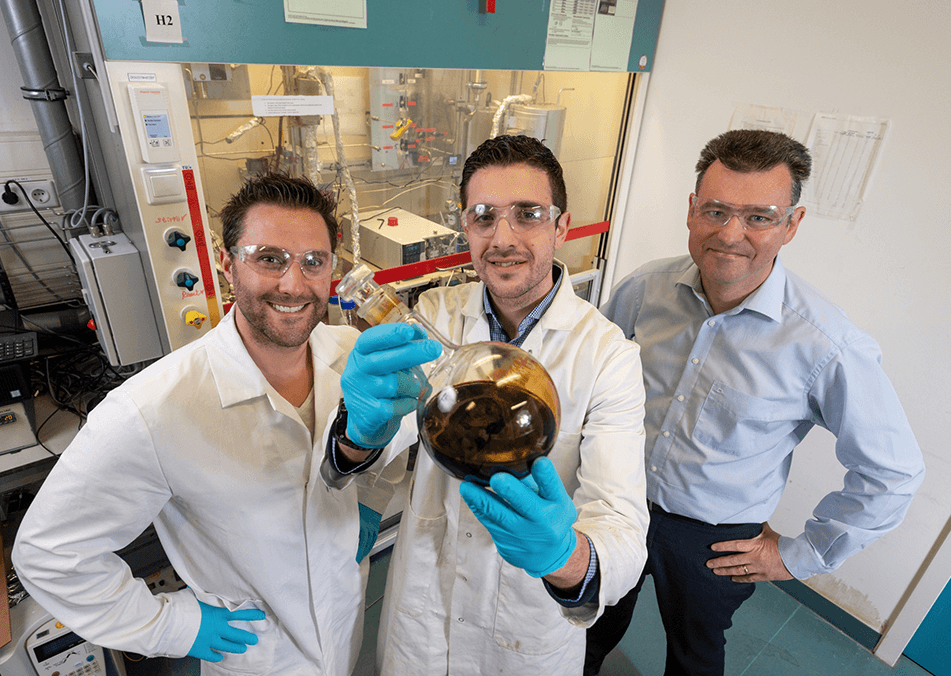
World Economic Forum (WEF) asked a group of international technology experts to identify this year’s Top 10 Emerging Technologies. After soliciting nominations from additional experts around the globe, the group evaluated dozens of proposals according to a number of criteria. Do the suggested technologies have the potential to provide major benefits to societies and economies? Could they alter established ways of doing things? Are they likely to make significant inroads in the next several years? “Technologies that are emerging today will soon be shaping the world tomorrow and well into the future – with impacts to economies and to society at large”, said Mariette DiChristina, Editor-in-Chief of Scientific American, and chair of the Emerging Technologies Steering Committee. In our constant lookout for the origins of innovation, IO will present WEF’s top-10 emerging technologies in a 10-part series. Today: Bioplastics for a Circular Economy.
After part 10 has been published, the whole series can be found here
The world has a huge plastics problem. According to WEF, less than 15% of it is recycled. Much of the rest is incinerated, sits in landfills or is abandoned in the environment – where, being resistant to microbial digestion, it can persist for hundreds of years. Plastic debris accumulating in the ocean causes all kinds of problems, from killing wildlife when mistakenly ingested to releasing toxic compounds and entering our bodies via contaminated fish.
Biodegradable plastics can ease these problems, contributing to the goal of a circular plastic economy
in which plastics derive from and are converted back to biomass. Like standard plastics derived from petrochemicals, biodegradable versions consist of polymers that can be moulded while in their fluid state into a variety of forms. Recent breakthroughs in producing plastics from cellulose or lignin (the dry matter in plants) are promising, if only because it can be obtained from non-food plants, such as giant reed, grown on marginal land not suitable for food crops, or from waste wood and agricultural byproducts that would otherwise serve no function.
Cellulose, the most abundant organic polymer on earth, is a major component of plant cell walls; lignin fills the spaces in those walls, providing strength and rigidity. To make plastics from those substances, manufacturers must first break them into their building blocks, or monomers. Investigators have recently found ways to do so for both substances. The lignin work is particularly important because lignin’s monomers are composed of aromatic rings – the chemical structures that give some standard plastics their mechanical strength and other desirable features. Lignin does not dissolve in most solvents, but investigators have shown that certain environmentally friendly ionic liquids (which are composed largely of ions) can selectively separate it from wood and woody plants. Genetically engineered enzymes similar to those in fungi and bacteria can then break the dissolved lignin into its components.
Companies are building on these findings. For example, Vertoro (based at the Brightlands Chemelot Campus in Geleen, the Netherlands) is producing crude lignin oil and “aims at taking a Saudi-Arabia-like place in the biobased value chain by focusing on producing a biobased crude oil cheaper and at a scale larger than anyone else.” TU Wien has patented a system that can extract bioactive substances such as cannabinoids, flavonoids or polyphenols, that can, in turn, be used for medicines and sun creams. The Hamburg based start-up LignoPure wants to “make lignin, as the second most common biopolymer in the world, finally a permanent fixture in our daily products”.
But there is much more. Chrysalix Technologies, a spin-off from Imperial College London, has developed a process that uses low-cost ionic liquids to separate cellulose and lignin from starting materials. A Finnish biotechnology company, MetGen Oy, produces a number of genetically engineered enzymes that cleave lignins of different origins into components needed for a wide range of applications. And Mobius is developing lignin-based plastic pellets for use in biodegradable flower pots, agricultural mulches and other products.
Many hurdles must be overcome before the new plastics can be widely used, the WEF-committee concludes. “One is cost; another is minimizing the amount of land and water used to produce them – even if the lignin comes only from waste, water is needed to convert it into plastics. As with any major challenge, the solutions will require a combination of measures, from regulations to voluntary changes in the way society uses and disposes of plastics. Still, the emerging methods for producing biodegradable plastic offer a perfect example of how greener solvents and more effective biocatalysts can contribute to generating a circular economy within a major industry.”
(Most of this article is drawn from the 2019 Top 10 Emerging Technologies report)

